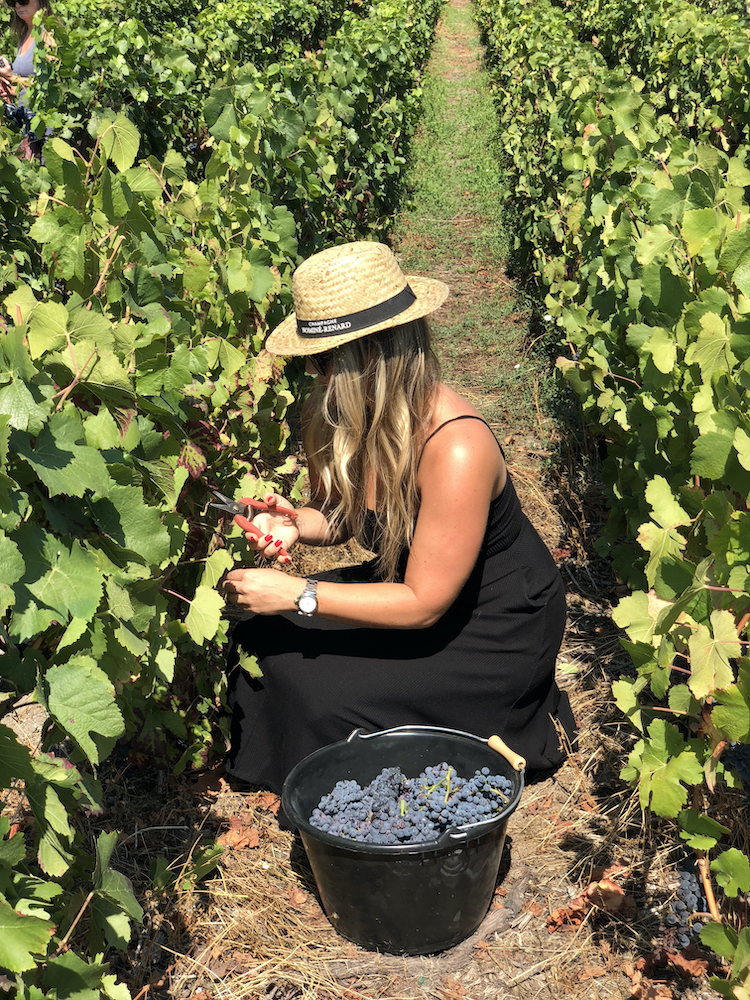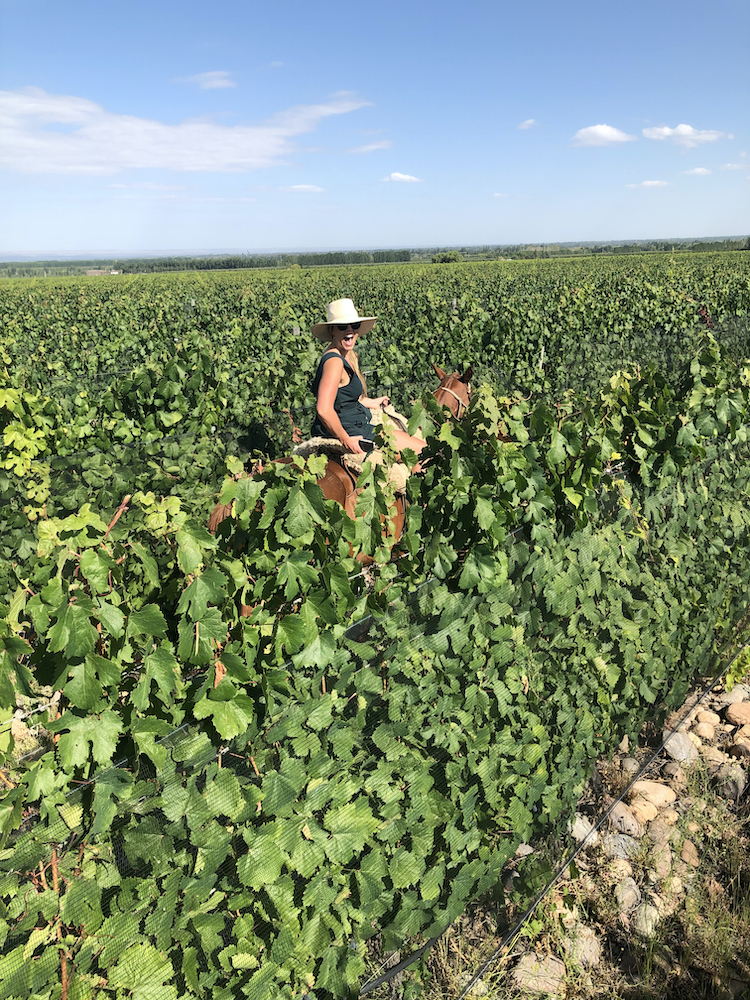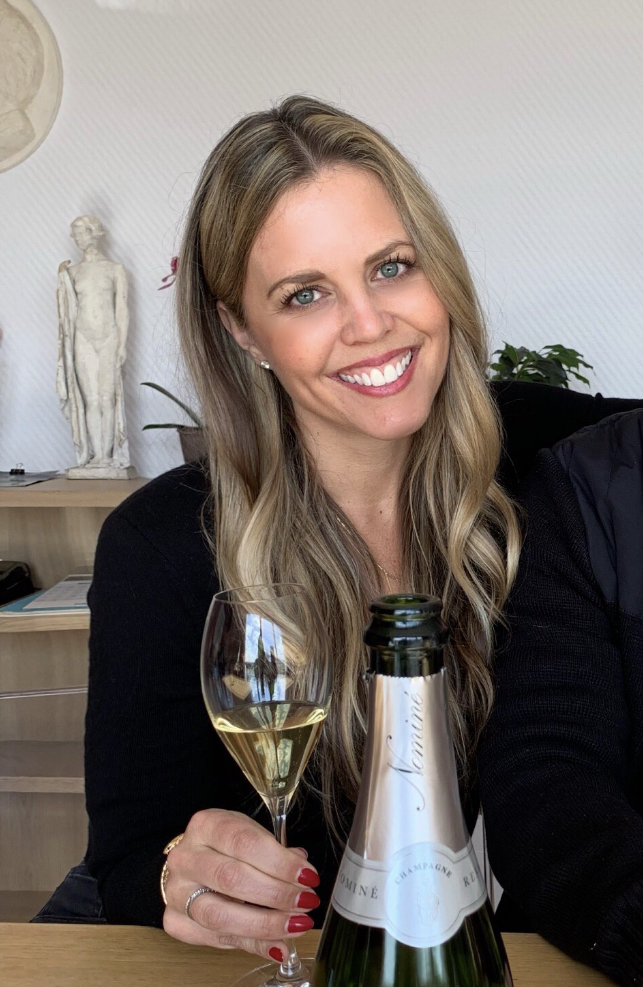

Today is a post on one of my favorite topics….wine! As much as I love wine and try to educate myself on the topic, it’s one I still find pretty intimidating. Keith and I have been to Napa, Sonoma, vineyards in Tuscany (although, in my defense, I was pregnant) and we’ve taken numerous “classes” and tours, but even still, I only know the basics. This is the main reason that I’m honored to have Becca and her wealth of information for todays post.
She breaks so many of your question down in such an easy, digestible way, I am certain you’ll walk away learning something new. Without further adieu, here’s the lovely Becca Powelson:
About Becca Powelson
What are good varietals for less expensive, quality bottles?
When looking for an ‘everyday drinker’, I recommend keeping it simple. Here are the varietals (a fancy word for which single type of grape is used to make the wine) that I would seek.
For sparkling wine – Cava is incredible. It’s made outside of Barcelona, Spain, and is dry and resembles Champagne in flavor but is much less expensive-you shouldn’t have to spend more than $12 per bottle. It’s also great to make other drinks with (Campari, Aperol, Mimosa, etc).
For a white wine – I would recommend looking for a Muscadet. This is a bit less common but becoming more popular. It’s a dry French wine from the Loire Valley. It’s extremely easy-drinking and refreshing. Sometimes too easy to consume!
For rosé – I would recommend looking to France, but not necessarily Provence – which is the most popular and prestigious region. Pale colored (think of salmon) rosé from Languedoc or AOC France will deliver similar taste but for less than $15 per bottle. It’s also perfectly okay to select a rosé because it’s very pale pink in color and has a pretty label-in this category, that’s generally a safe bet!
For a red wine – I would recommend a Tempranillo from Spain or Malbec from Argentina, you can spend less than $12 and be sure to have a wine that isn’t too heavy but has enough structure to feel like a warm hug. It will be perfect with your pasta, grilled meats or roasted veggies.
When do you know what year you should buy the wine? Is 2 years too young?
If you are not a collector of fine wine, it’s best to drink wine when it’s young and fresh!
Does price of a bottle truly matter? Can or should you judge a wine based on cost?
To be completely honest, no. If you are not a connoisseur who has studied wine and understands why a wine is priced the way it is, much of the ‘cost’ will be lost on you, and that’s okay! If you are buying a bottle of wine that you would open on a Tuesday alone or a Friday with friends, I’d recommend spending $12-18 a bottle. This is a sweet spot where you will get quality without breaking the bank. If you are looking to splurge on a bottle, perhaps for a gift or special occasion, I would recommend spending around $40. There is a science behind this, but we’ll save that for another day.
If possible, I recommend supporting your local wine shop. You will receive better service and build a relationship with someone who knows your tastes and preferences and can offer you special deals.
What temperature should wine be stored at? What temp should it be served at?
The most important thing for storing wine is to keep it in a dark spot, away from sunlight. Ideally, laying all bottles with a natural cork on their side is best. I recommend all wines go in the fridge-for white and rosé, you can keep them in the fridge and pull them out to serve. For red, I recommend putting them in the fridge 10 minutes before serving. Most people drink their red wine way too warm!

What’s the best way to store an opened bottle?
For any wine that has been opened, it’s best to seal the bottle (with the screwcap or original cork, or other store-bought closure if you have one) and place it in the fridge. I would not recommend keeping it for more than 2-3 days. If you have the bottle after that timeframe, cook with it!
Do sulfites contribute to your hangover? If so, what wines have the most sulfites?
Sulfites are naturally occurring in wine and there is no scientific reason that could attribute headaches to their consumption. Most winemakers do add additional sulfites, though the usual amount is measured to the parts per million and are hardly detectable by our digestive system. They are added to help stabilize the wine and allow it to last longer.
What are the best types of glasses to drink red and white wine out of? Why does the shape of the glass matter so much?
For me, it’s most important to drink out of glass (with a stem) whenever possible. The ‘bowl’ or shape of the glass is important because it determines how much oxygen/air the wine will come into contact with. With more oxygen, the wine will open up-this is why you see larger glasses for heavier, bolder styles of wine, usually red. White wines are more flexible and to me, the most important glass selection comes with Champagne. Many are used to drinking out of the traditional flute, which does preserve the bubbles, however it compromises on the aromatics and enjoyment of the flavor. It is better suited to drink out of a classic white wine glass, or as the industry calls them, ‘all-purpose white’ glasses.
How to navigate a wine menu when you’re unfamiliar with the regions/blends, etc?
Utilize a sommelier if you have one, know the proper words to use to describe the wines you like. It’s also super important to be comfortable telling this person how much you’d like to spend. I recommend coming up with a range and being clear. For example, “I am looking for a dry white wine that has good acidity and minerality and would like to spend less than $60 for the bottle.” Be open to new regions, blends, varietals or styles-the variety is one of the best parts of drinking wine.
Find Becca on Instagram over @beccapowelson.

No comments:
Post a Comment